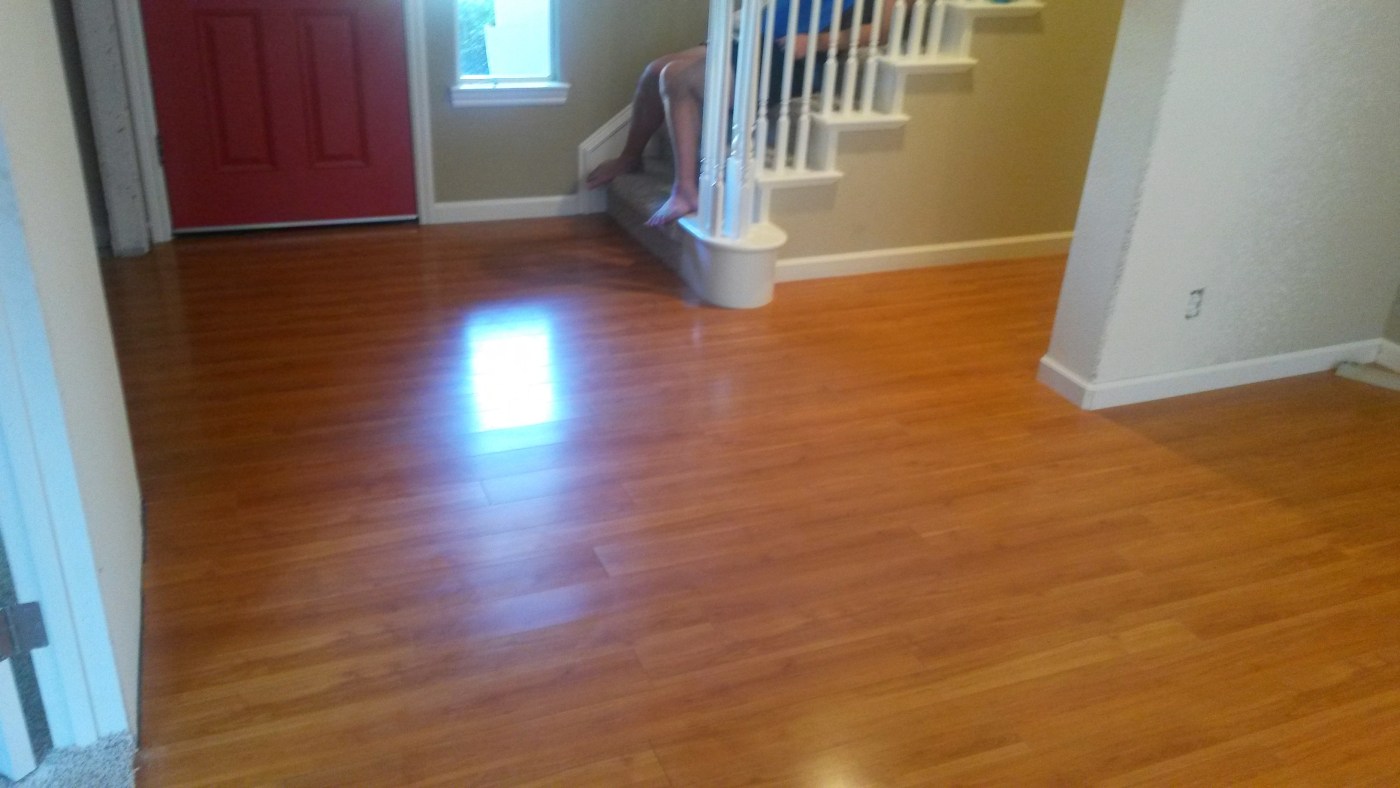Pros and Cons of Laminate Flooring
Though we’ll usually recommend hardwood flooring, there are occasions when choosing a laminate (Pergo) floor is ideal. A laminate floor mimics the look of hardwood, with each board topped with a realistic image of real wood flooring. To get the most realistic result, we recommend a laminate product with individual boards instead of the tiles picturing several boards at once. This allows for the randomized look of a real hardwood installation.
